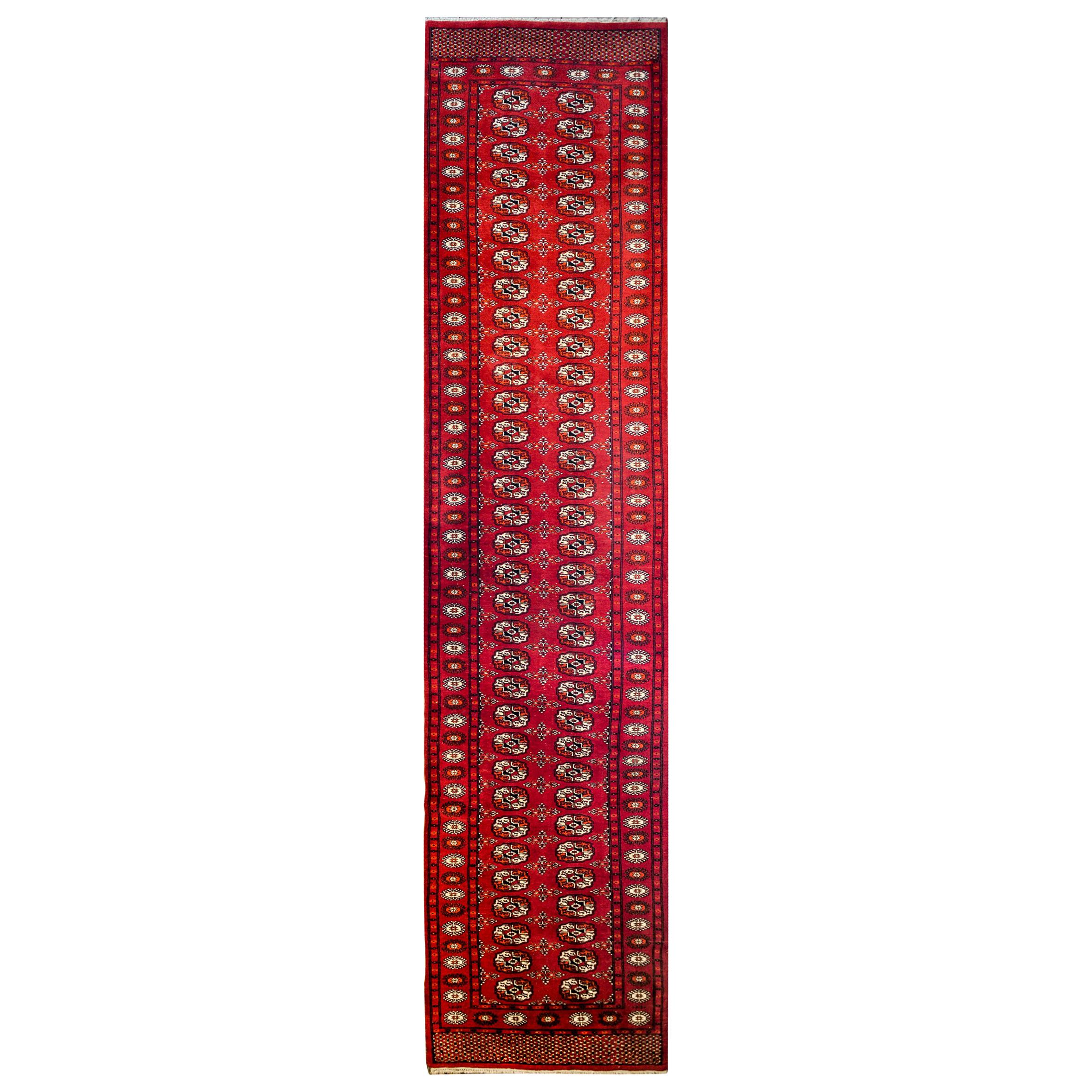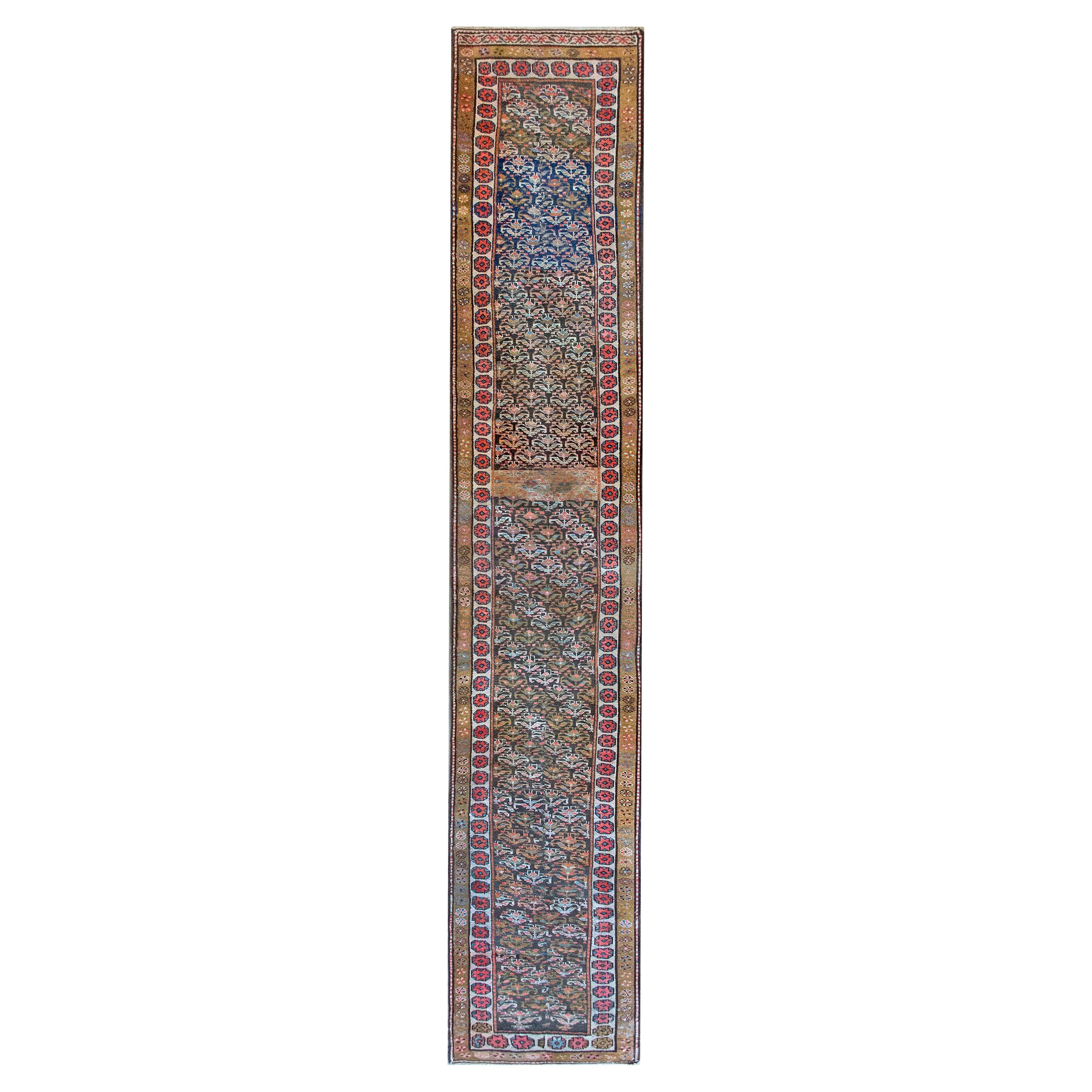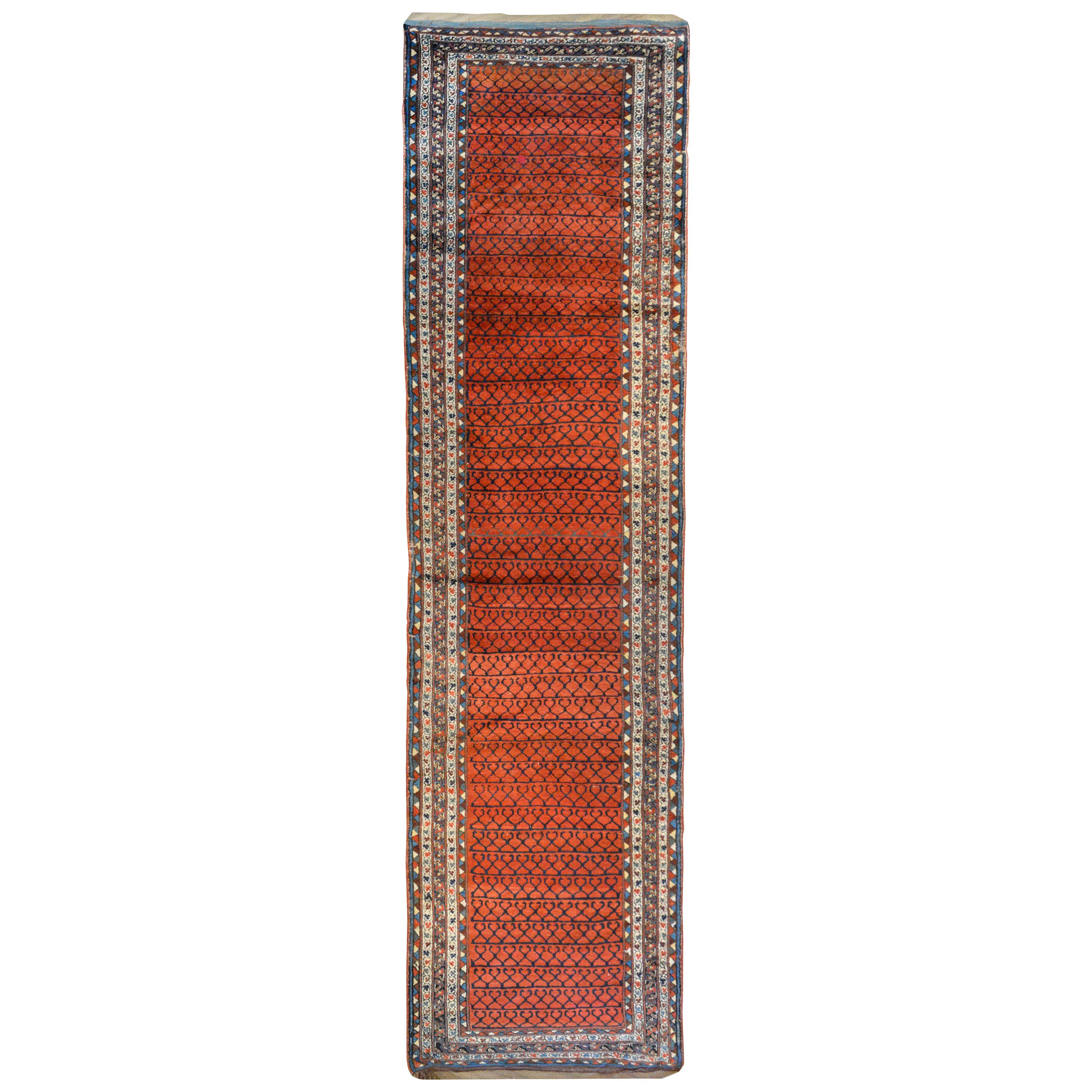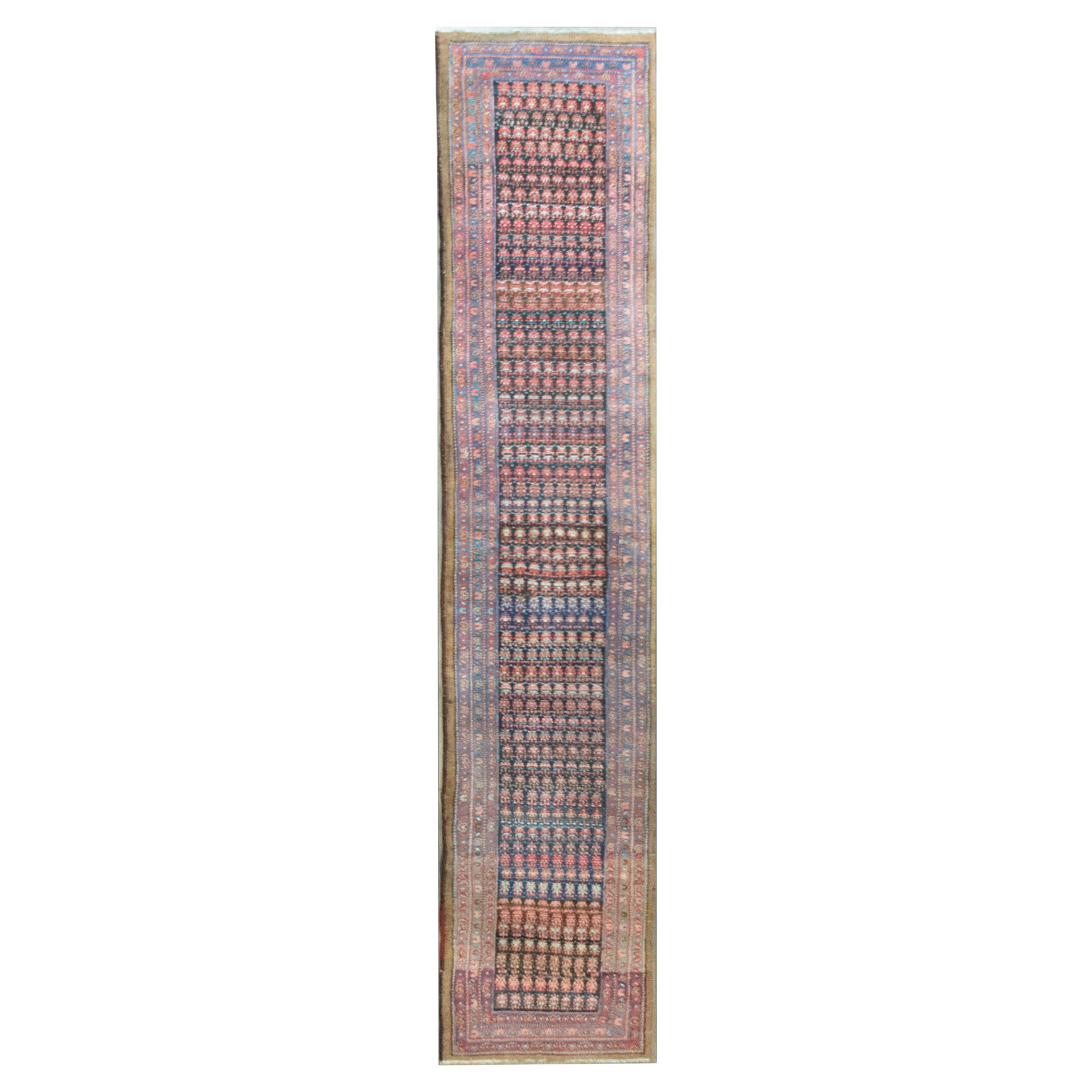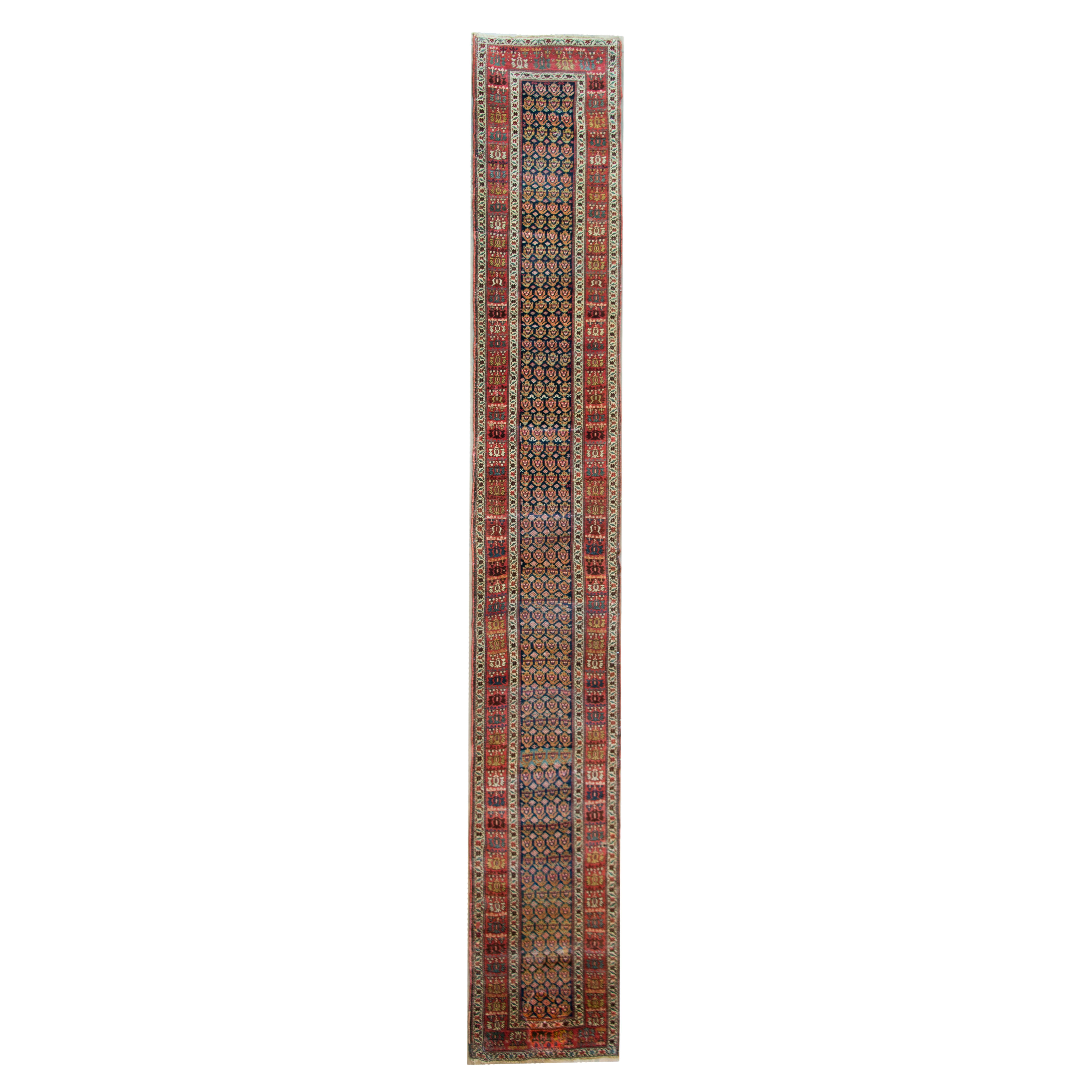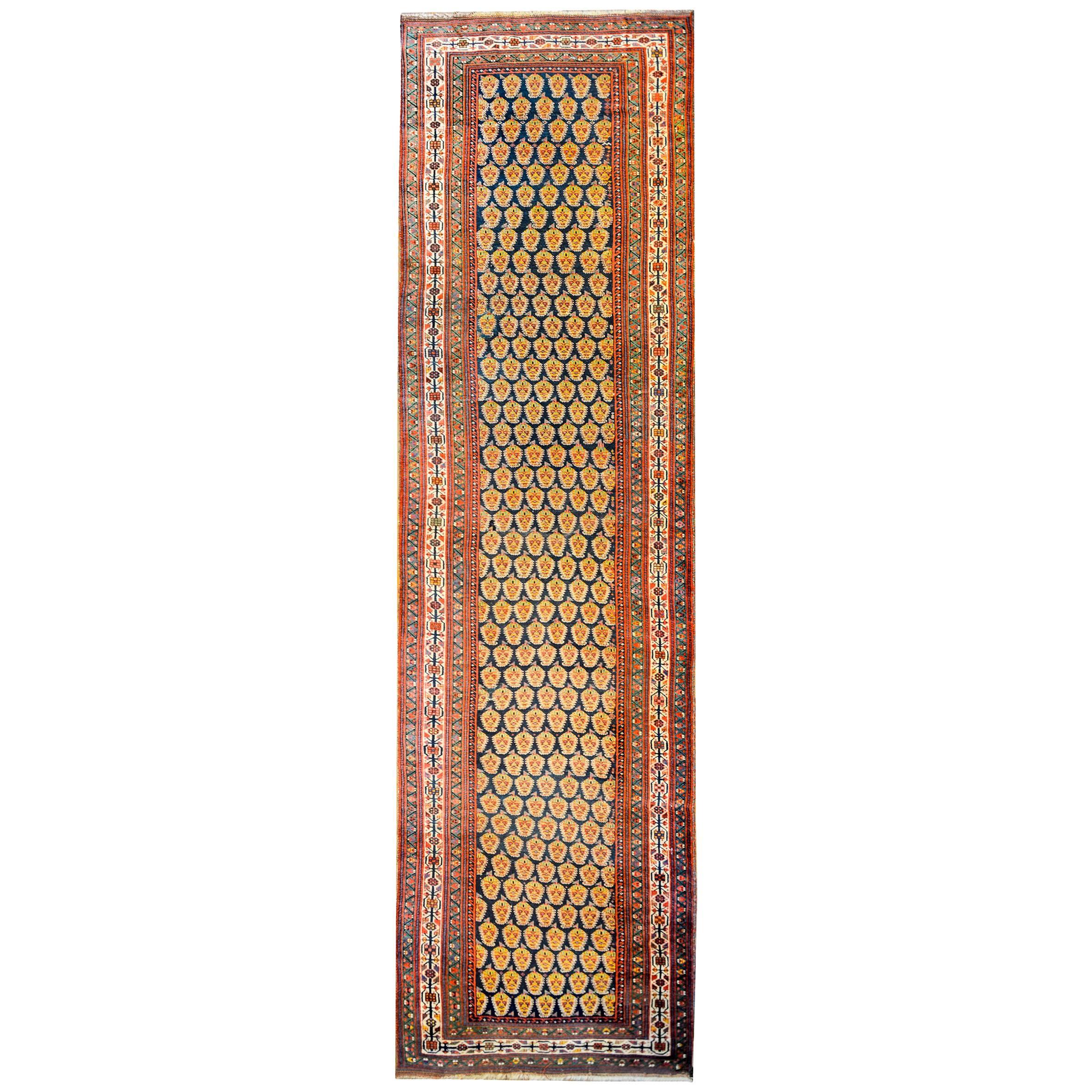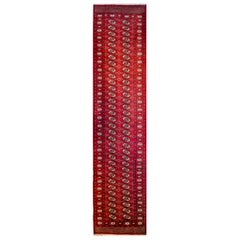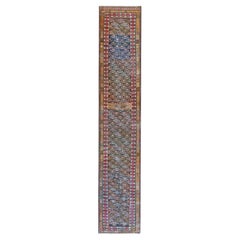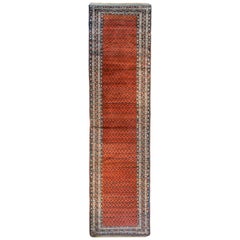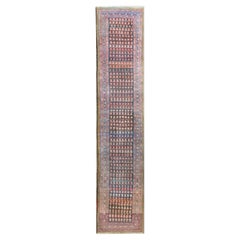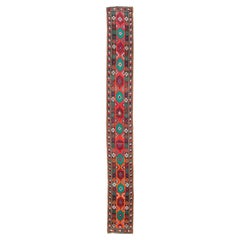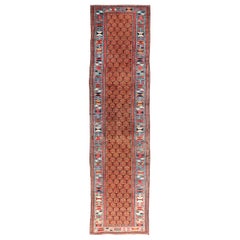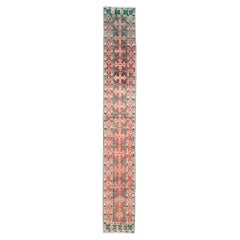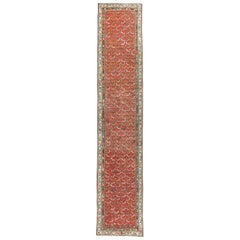Want more images or videos?
Request additional images or videos from the seller
1 of 8
Early 20th Century Bokhara Runner
$1,450
£1,094.91
€1,261.76
CA$2,046.57
A$2,256.29
CHF 1,180.42
MX$27,680.52
NOK 14,859.14
SEK 13,895.65
DKK 9,422.86
About the Item
A wonderful early 20th century Pakistani Bokhara runner with an all-over pattern of small medallions amidst field of floral medallions, all woven in crimson, black, and white wool. The border is simple, with a repeated stylized floral pattern flanked by two matching petite floral patterned stripes.
- Dimensions:Width: 31 in (78.74 cm)Length: 139 in (353.06 cm)
- Style:Tribal (Of the Period)
- Materials and Techniques:Wool,Vegetable Dyed
- Place of Origin:
- Period:
- Date of Manufacture:Early 20th Century
- Condition:Wear consistent with age and use.
- Seller Location:Chicago, IL
- Reference Number:Seller: AH111stDibs: LU928013564742
About the Seller
5.0
Platinum Seller
Premium sellers with a 4.7+ rating and 24-hour response times
Established in 1992
1stDibs seller since 2012
562 sales on 1stDibs
Typical response time: <1 hour
- ShippingRetrieving quote...Shipping from: Chicago, IL
- Return Policy
Authenticity Guarantee
In the unlikely event there’s an issue with an item’s authenticity, contact us within 1 year for a full refund. DetailsMoney-Back Guarantee
If your item is not as described, is damaged in transit, or does not arrive, contact us within 7 days for a full refund. Details24-Hour Cancellation
You have a 24-hour grace period in which to reconsider your purchase, with no questions asked.Vetted Professional Sellers
Our world-class sellers must adhere to strict standards for service and quality, maintaining the integrity of our listings.Price-Match Guarantee
If you find that a seller listed the same item for a lower price elsewhere, we’ll match it.Trusted Global Delivery
Our best-in-class carrier network provides specialized shipping options worldwide, including custom delivery.More From This Seller
View AllGorgeous Mid-20th Century Bokhara Rug
Located in Chicago, IL
An early 20th century Pakistani runner with an all-over stylized flower pattern woven in orange and white colored wool, on an intense crimson colors background. The border is wonderf...
Category
Mid-20th Century Pakistani Tribal Persian Rugs
Materials
Wool
Early 20th Century Persian Kurdish Runner
Located in Chicago, IL
This early 20th-century Kurdish runner is a captivating example of tribal craftsmanship, woven by Kurdish artisans from the rugged regions of Iran, Iraq, Turkey, and Syria. Renowned ...
Category
Antique Early 1900s Persian Tribal Persian Rugs
Materials
Wool
Early 20th Century Karabak Runner
Located in Chicago, IL
A gorgeous early 20th century Azerbaijani Karabak runner with a central field with a geometric trellis pattern woven in indigo against a rich crimson background. The border is extrao...
Category
Antique Early 1900s Azerbaijani Tribal Persian Rugs
Materials
Wool
Early 20th Century Persian Bidjar Runner
Located in Chicago, IL
A beautiful early 20th century Persian Bidjar runner with a field woven with an all-over repeated multi-colored floral pattern set against an abrash indigo background, surrounded by ...
Category
Antique Early 1900s Persian Tribal Persian Rugs
Materials
Wool
Early 20th Century Persian Bidjar Rug
Located in Chicago, IL
An incredible early 20th century Persian Bidjar runner with an all-over paisley pattern woven in crimson, gold, indigo, and cream, and surrounded by a complex border composed of mult...
Category
Vintage 1920s Persian Tribal Persian Rugs
Materials
Wool
Amazing 19th Century Afshar Runner
Located in Chicago, IL
An amazing late 19th century Persian Afshar runner with a central field containing and all-over multi-colored paisley pattern woven in crimson, green, pi...
Category
Antique 1880s Tribal Persian Rugs
You May Also Like
Mid-20th Century Handmade Persian Hamadan Runner
Located in New York, NY
A vintage Persian Hamadan runner handmade during the mid-20th century with cotton highlights.
Measures: 1' 3" x 10' 6".
Category
Mid-20th Century Persian Tribal Persian Rugs
Materials
Wool
Antique Persian Kurdish Long Gallery Runner with Repeating Tribal Motif Design
Located in Atlanta, GA
Antique Persian Kurdish Long Gallery Runner with Repeating Tribal Motif Design. Keivan Woven Arts; rug X23-0816-335; country of origin / type: Persian / Kurdish circa 1900.
Measures:...
Category
Antique Late 19th Century Persian Tribal Persian Rugs
Materials
Wool
Tribal Mid-20th Century Handmade Persian Turkoman Runner
Located in New York, NY
A vintage Persian tribal Turkoman rug in runner format handmade during the mid-20th century. Although this rug is of Persian origin, the roots of Turkoman rugs originated in the Central Asian region.
Measures: 1' 6" x 10' 4"
Central Asian Rugs & Carpets:
Central Asia is a vast area stretching from Northeastern Persia to western China, and from northern Afghanistan to the southern edge of Russia. The carpets can be usefully divided into three groups: the nomadic Turkmen rugs of Turkmenistan, northern Afghanistan, and northeastern Persia; the non-Turkmen tribal pieces from Kazakhstan, Uzbekistan, and Kirghizstan; and the urban creations of Khotan, Yarkand, and Kashgar, oasis cities of Western China (Xinjiang Province).
Commercially, the most important group is from Khotan, the easternmost of the Chinese Turkestan cities. The craft of rug weaving is primarily in the hands of Muslim Uighurs. Khotan carpets mix purely Central Asian design themes with Chinese elements. Native Khotan devices include pomegranate trees, upright flowers, round medallions, and yellow or red grounds. Chinese motives include triangular fretwork corners, swastika fretwork, and Yun-Tsao Tou (clouds and rain) diagonally striped polychrome borders. Cotton foundations, asymmetrical (Persian) knots, and medium weaves are standard. Some vintage Khotan are in horizontal, pictorial layouts with multiple various vases and plants. Saphs (multiple prayer niche panel carpets) are also a Khotan specialty. Others employ stepped and layered lozenge medallions, singly or in pairs. Still others, almost all antique, feature a stylized version of the allover Persian Herati design. Many of the oldest pieces employ brown wool wefts. Antique and vintage Khotans are almost always in the k’ang (double square) layout, conforming to the local household plans. Only relatively recently has the 6’ by 12’ or 7’ by 16’ format been replaced by the 9’ by 12’ size. As a result, an antique room size Khotan carpet is very uncommon. Reds are cinnamon, tomato and rust, never wine reds, crimson, or scarlet. Yarkand, farther west on the old Silk Road specializes in multi-medallion long carpets while Kashgar, farthest west and most under Persian influence, has traditionally knotted allover pattern pieces with finer weaves, often with silk piles, and enriched with medal thread, on cotton foundations. Extant Kashgars go back to the 17th century, but the carpet craft in Chinese Turkestan must be much older as fragments have been recovered from local tombs of the early C.E. period. Kashgars are the rarest of all East Turkestan rugs. Most available vintage East Turkestan carpets are interwar Khotans, many with pleasingly soft decorative palettes.
The non-Turkmen nomads include the Kazakh, Kirghiz, Uzbek, and Karakalpak groups. Like the Turkmen, they were once all seasonally migratory, dwelling in round felt tents (yurts), but have been settled, at least partially, in the villages, and have taken up crafts and agriculture instead of sheep herding. As a result, carpet production has transitioned from domestic tent use to commercial sale, but the roots of long traditions are still evident. The Uzbeks weave...
Category
Mid-20th Century Persian Tribal Persian Rugs
Materials
Wool
Early 20th Century Handmade Northwest Persian Runner
Located in New York, NY
An antique northwest Persian rug in runner format handmade during the early 20th century.
Measures: 2' 8" x 13' 3"
Persian rugs & carpets:
Persia (Iran) is a moderately large ...
Category
Early 20th Century Persian Tribal Persian Rugs
Materials
Wool
1950's Pakistani Bokhara Carpet Runner
Located in Dallas, TX
79070 Vintage Pakistani Bokhara Rug Runner, 02'07 x 09'10. This hand-knotted wool vintage Pakistani Bokhara rug runner exemplifies classic elegance combined with rich cultural histor...
Category
Mid-20th Century Pakistani Tribal Caucasian Rugs
Materials
Wool
Antique Hamadan Runner, Late 19th Century
Located in New York, NY
This camel tone plain border west Persian runner displays four small ivory medallions floating on a close lattice field pattern in red, mustard and ivory. The camel tone is achieved ...
Category
Antique Late 19th Century Persian Tribal Persian Rugs
Materials
Wool
More Ways To Browse
Pakistan Bokhara Rug
Pakistan Bokhara
Persian Bokhara Carpet
Bokhara Runner
Antique Ziegler Rugs
Antique Heriz Runner
Mushroom Specimen
Persian Lion Rug
Rare Antique Persian Rugs
Shahsavan Kilim
Camel Runner
Mansion Size Persian Rugs
Antique Isfahan Rugs
Millefleur Rug
2 X 3 Vintage Persian Rug
Kashan Pictorial Rug
Mazandaran Rugs
Antique Wool Paisley
